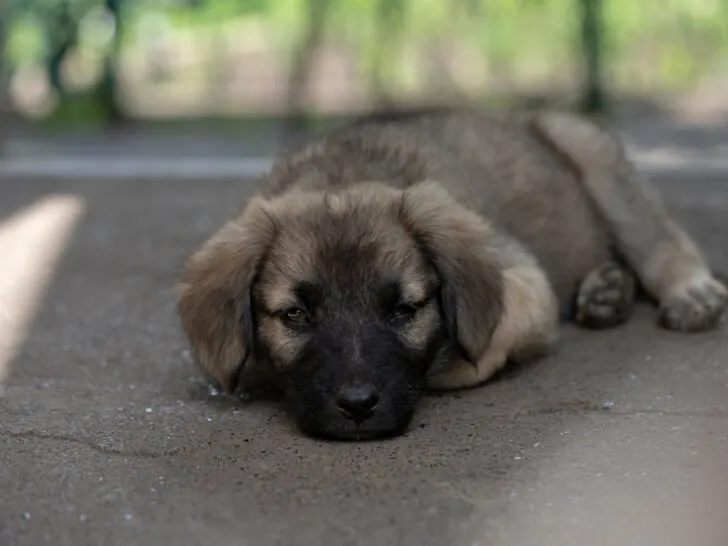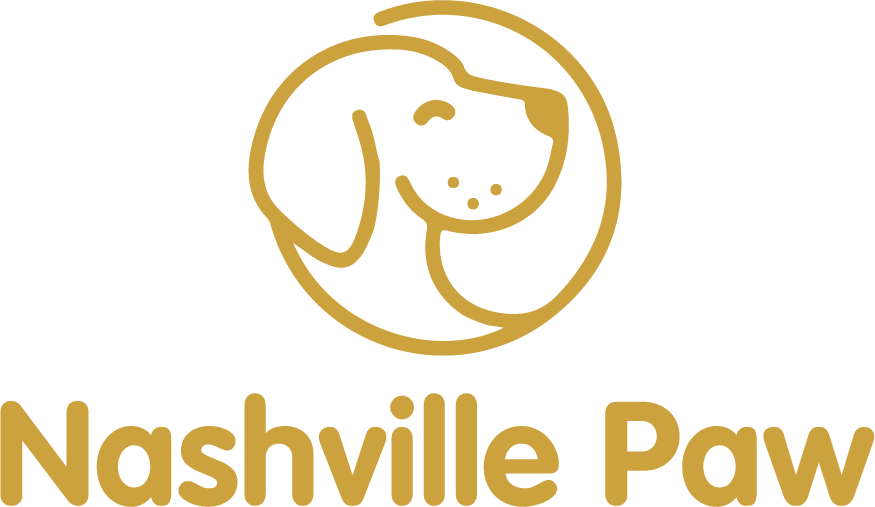Medically Reviewed by Dr. Majid Tanveer, DVM
Parvo in puppies is an unfortunately common and dangerous disease, so it’s essential to recognize the signs and know what to do.
Is there any cure for this deadly disease of your beloved friend? Do you know how this fatal disease spreads, how to treat it, and how to prevent it?
Canine parvo is a highly contagious and potentially fatal disease that affects puppies aged six weeks to six months. It spreads through direct contact with an infected dog or contaminated objects, attacking their intestinal cells and leading to dehydration and weakness. Unfortunately, no cure is available for this disease; however, vaccinating your puppy can protect him from it.
As a vet, I’ve seen firsthand the devastating effects of canine parvo in young puppies. This article covers the main symptoms, causes, treatments, and prevention methods for this severe illness. So, let’s get started!
What Is Parvo?
Canine parvo is caused by Parvovirus, which is an icosahedral-symmetry, 20 to 26 nanometer single-stranded DNA virus in the Parvoviridae family – derived from the Latin ”parvus” which translates to “small.”
Canine parvovirus (CPV) is an infectious viral disease primarily targeting puppies between six and twenty weeks of age. However, adults can also be susceptible to this illness, manifesting as a severe gastrointestinal infection or the rare variant myocarditis – heart muscle inflammation – in very young (neonatal) puppies.
The virus targets the small intestine and has the following effects:
- Hindering nutrient absorption
- Destroying cells
- Destabilizing the gut’s natural barrier
Parvo in puppies has been known to harm bone marrow and lymphopoietic tissues; worse, the heart is attacked too.
Variants of Parvo Virus
Domesticated dogs and wild canids are affected by two forms of canine parvovirus known as CPV1 and the more severe CPV2. Variants of the CPV2 virus have been detected with increasing frequency, namely:
- CPV-2a was identified in 1979
- CPV-2b was discovered in 1984
Canine parvovirus infection is typically attributed to these two distinct strains, which have replaced the original one. Although indistinguishable from standard tests, the current virus differs from the one initially discovered.
Transmission of Parvo
This virus is incredibly contagious and can spread through contact with an infected dog or objects that have been contaminated. Every time your puppy touches, licks, or eats the feces of a diseased animal, he risks being exposed to parvovirus!
Indirect transmission of parvovirus can happen when your puppy has touched an environment that was recently exposed to a contaminated dog, such as:
- Collars
- Food or water bowls
- Leashes
It could also have been transmitted through the hands and clothing of people who handled infected dogs. To protect your puppy from contracting this virus, it is essential to utilize a reliable parvo disinfectant solution.
What Causes Parvovirus Infection in Dogs?

Parvo is a virus that poses a significant risk of infection, spread through direct contact with an infected dog or indirectly via the fecal-oral route. Additionally, the virus can linger in ground soil for up to twelve months.
Within four to five days of contracting the virus, infected dogs begin to shed it in their feces. This shedding continues throughout the illness and for approximately ten days following clinical recovery.
Infection can also occur through indirect sources such as fomites (environmental objects, personnel, and equipment) tainted with viral particles.
Combining parvo with a parasitic or secondary infection can lead to a more severe virus. Furthermore, particular breeds are at higher risk than others; these include:
- English Springer Spaniels
- Labrador Retrievers
- Rottweilers
- Doberman Pinschers
- German Shepherd Dogs
- American Staffordshire Terriers
Stages of Parvo
Like most viral infections, canine parvovirus follows the same stages of progression. These are as follows:
Infection
Puppies and adult dogs are at risk of contracting parvovirus from the feces of an affected dog. The virus may originate from a wide variety of sources, including:
- Mother’s body
- Contaminated surfaces or objects
- People who have come into contact with infected fecal matter, etc.
Even the smallest amount of fecal matter can have disastrous consequences, as contaminants enter through a puppy or dog’s mouth.
Incubation
Parvovirus has an incubation period of about three to seven days, during which a dog can be infected yet not exhibit any signs.
During this time, the virus seeks out cells that divide quickly to rapidly multiply and spread through other parts of the dog’s body–often targeting tonsils or lymph nodes found in the throat. This tactic enables it to invade its host with ease and efficiency effectively.
As soon as it replicates and infiltrates the bloodstream, this virus looks for cells that divide rapidly.
It has a particular affinity to:
- Bone marrow
- Intestinal tract epithelial cells in dogs of all ages
But especially in young puppies – parvovirus can damage their heart muscle tissue causing:
- Cardiac arrhythmias
- Congestive heart failure
Illness
When the parvovirus infiltrates the bone marrow, it devastates young immune cells and consequently causes a drastic decrease in protective white blood cell numbers.
This renders the dog’s body helpless against further invasions by the virus, allowing it to penetrate deeper into his gastrointestinal tract, where extreme damage can be done.
The virus viciously attacks the intestinal lining, thereby preventing it from performing its vital functions such as:
- Absorbing essential nutrients and electrolytes
- Halting fluid loss into the stool
- Hindering bacteria’s entry to the gut wall and eventually into blood circulation.
Signs And Symptoms

Typically, the first signs of parvoviral enteritis appear between 5 and 7 days after infection, although this timeline can range from 2 to 14 days. These might be signs that something is wrong:
- Weight loss
- Weakness
- Bloody diarrhea
- Vomiting
- A very high or very low temperature
- Pale gums
- Abdominal (tummy) pain
- Lethargy
- Loss of appetite
- Dehydration
Rarely, diarrhea can be pretty smelly and contain mucus and blood. It is important to remember that not all dogs will display every symptom; however, vomiting and diarrhea are the universal signs of this condition – with vomiting often appearing before symptoms of diarrhea.
In severe cases, puppies may faint and experience:
- An elevated heart rate
- Breathing difficulties
- Hypothermia as a result of the intensity of their dehydration and illness
Tests and Diagnosis
When a dog exhibits specific symptoms, parvovirus infection may be the cause. Diagnosis can be confirmed through the following:
- Laboratory tests
- Fecal testing
The most effective way to detect parvovirus in a clinical setting is by performing Fecal ELISA tests (enzyme-linked immunosorbent assay).
- In an ELISA test, antibodies to parvovirus are bound to the testing chamber and mixed with a fecal sample.
- If there are any proteins related to the virus present in the stool, they will attach to the immobilized antibodies.
- A color-changing chemical is added; if it changes to ‘positive,’ this indicates that the parvovirus has been detected.
- Results can be obtained in under 15 minutes, making it a fast and efficient way for veterinarians to test for CPV infections.
Although this test is accurate, a negative result does not guarantee that your dog doesn’t have parvovirus if it’s showing symptoms. In such cases, more tests may be required.
Treatment for Parvo
Parvo is a chronic, incurable condition. However, you can help your pup by providing supportive care while he battles his symptoms, such as vomiting and diarrhea. Make sure to keep him properly hydrated and nourished throughout the illness.
Although some dogs may improve from the outpatient parvo treatment, it is greatly recommended that they be hospitalized for the highest chance of success. Necessary treatments include:
- Intravenous fluids to provide hydration
- Special highly digestible diet
- Potential antibiotics
- Antiemetics (to stop vomiting)
- Antidiarrheals
When puppies contract diseases like parvo, their immune systems become deficient, and their white blood cell counts drop dangerously low. This weakens the pup’s ability to ward off other bacterial infections due to the damage that has been done to its intestinal walls.
It is integral for a vet to attend to your dog promptly, as it may need antibiotics to recover from these secondary ailments fully. Additionally, medical experts will have an eye on any future complications that could arise.
Parvo is a severe disease and can be fatal. Thankfully, when treated, the survival rate for dogs ranges from 68-92%. Additionally, those puppies that make it up to three or four days have an excellent chance of fully recovering.
Despite varying levels of severity in each case, you should expect your pup to recover within one week after diagnosis with parvo.
Preventing Parvo in Puppies
The only way to guarantee that your dog remains healthy is through prevention since this disease is exceptionally infectious and rapidly spreading.
At six weeks of age, puppies should be administered a combination shot with the CPV vaccine every 3 to 4 weeks until they are 16+ weeks old.
To guarantee lasting immunity and protection against illnesses like distemper, canine adenovirus, parainfluenza, and more in adulthood, one booster vaccination is recommended during the first year after this cycle has been completed, with another at three-year intervals after that.
- Proper socialization and training are essential for puppies. To keep them safe, introduce your pup to fully vaccinated adult dogs in a secure place like your home.
- It is essential to protect puppies from coming into contact with unvaccinated dogs until they are fully vaccinated against parvo.
If a CPV-infected dog has infected your home and yard, there are several steps you can take to decontaminate them before bringing in another pup. Bleach can deactivate the virus effectively!
- Mix one part of bleach with thirty parts water for an optimal solution to disinfect any indoor living space (including bedding, food/water bowls, and all surfaces) that an infected dog inhabited.
After one month indoors, CPV’s ability to infect animals weakens. Outdoors, rain, or watering can dilute the virus concentration over time. Combined with sunlight’s sanitizing effects, the number of viruses should reach a safe level in a few weeks.
- Avoid contact between your pup or adult dog and other dogs’ feces while walking or playing outdoors.
- Properly dispose of waste to prevent the spread of canine parvovirus and other diseases that can harm humans and animals.
Buy your dog from a responsible breeder or reputable rehoming center. Ensure you see your puppy, his siblings, and his mum in the place he is raised on multiple occasions.
Pet Care Tip: Check out this video on safely caring for a dog with parvo. It’ll show you how to assess their condition without risk to yourself or your pup.
Frequently Asked Questions
Can a Dog Be Cured of Parvo?
No cure exists for Parvo, but supportive treatments to address symptoms such as vomiting and diarrhea can be provided. Nourishment and hydration are vital for a puppy’s recovery from this virus.
Can Humans Catch Parvovirus From Dogs?
Humans cannot contract parvovirus from their dogs, but they can spread the virus from one dog to another via clothes, shoes, or hands. Humans have their form of parvovirus, distinct from that of dogs, and it is not transmissible either way.
Can a Vaccinated Dog Get Parvo?
The canine parvovirus vaccine offers excellent protection from the virus, making it highly unlikely for vaccinated dogs to become ill with it. However, no vaccine is foolproof; there is still a chance of infection. Take extra precautions and follow through with all recommended doses to ensure your pup’s safety.
